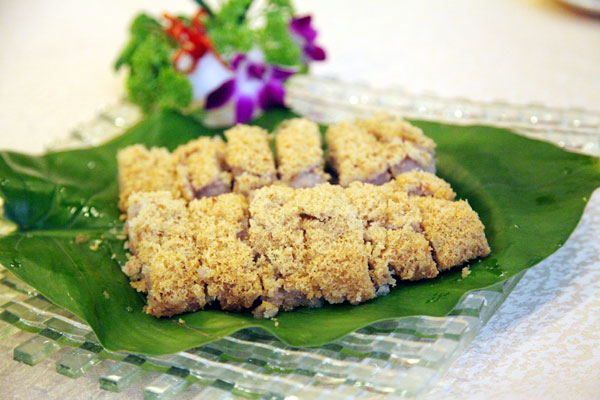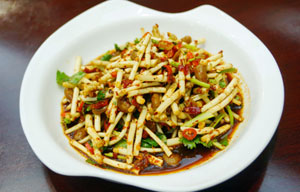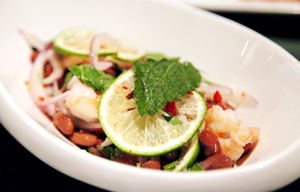Fish swimming in beer
 |
|
Taro-stuffed duck is an inspired creation on the menu of Cathay Chinese Restaurant. [Photo by Fan Zhen/China Daily] |
It is obvious that Huang, Guilin born and bred, is proud of his culinary heritage.
He serves up a stuffed water chestnut, crisp to the bite until the sweetness of the aquatic corm meets the sweetness of the minced prawn filling. He wisely leaves the strong flavoring aside, and lets the ingredients speak. All that is needed is the crystal glaze that makes the dish shine.
Another ingredient he proudly displays almost naked is the steamed betel-nut taro that is served with nothing more than just a little saucer of sugar.
The mauve hues of the root are laced with darker purple, just like the grains of a cut betel-nut, hence its name. The taro grows abundantly along the water's edge and Guilin's Lipu region is famous for its yams, another name for this root vegetable.
Both water chestnut and taro are local produce, exported all over China and abroad when they are in season.
Huang trained under both Cantonese and Sichuan chefs, but he has added his own influence to Cathay's menu. For example, he serves a very well-dressed duck, boned and stuffed with a taro paste.
He roasts the whole duck, just like the Cantonese barbecue, but he later removes all the bones, carefully preserves the skin and then applies a thick layer of taro paste underneath.
The stuffed duck is dusted with a gluten flour and deep-fried. The result is fluffy taro and duck cake that is redolent with the fragrance of yam, yet tasting of duck.
The chef is modest about his success, but I have it on good authority that this is a must-eat item.
It is also a good example of how talented chefs can apply the methods they learn to the excellent ingredients available right at home.


















